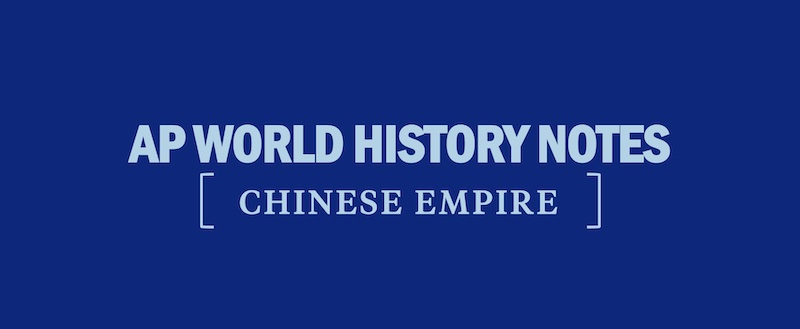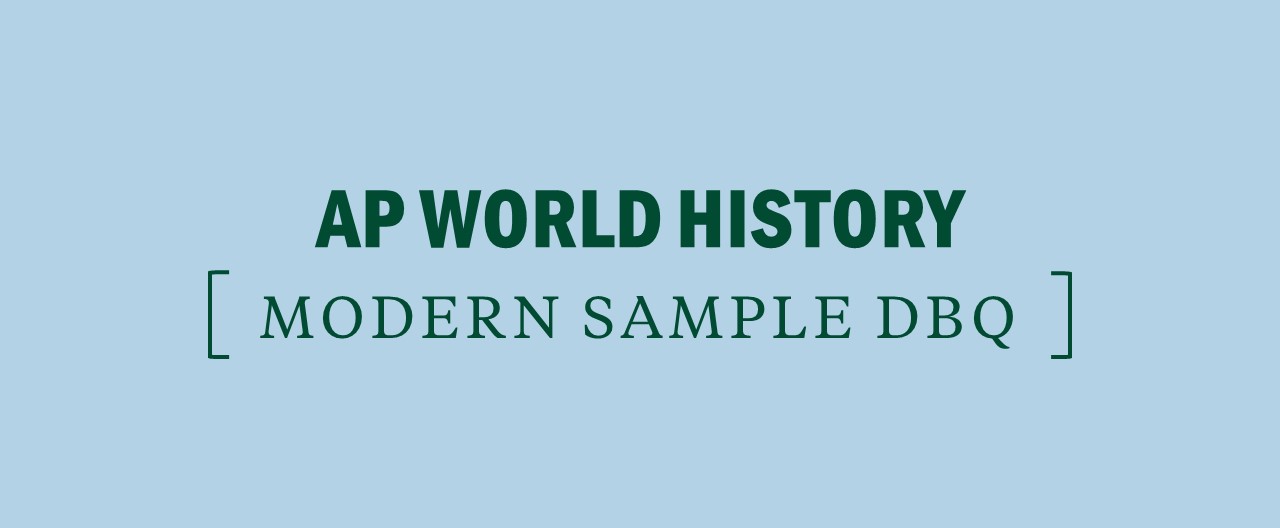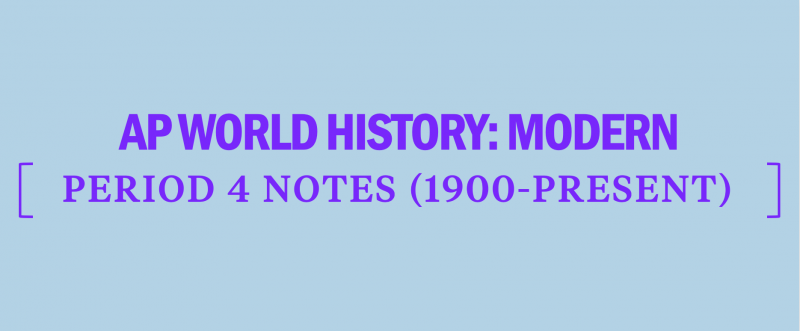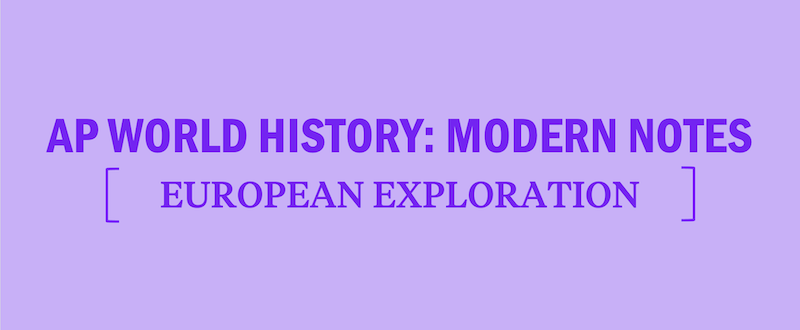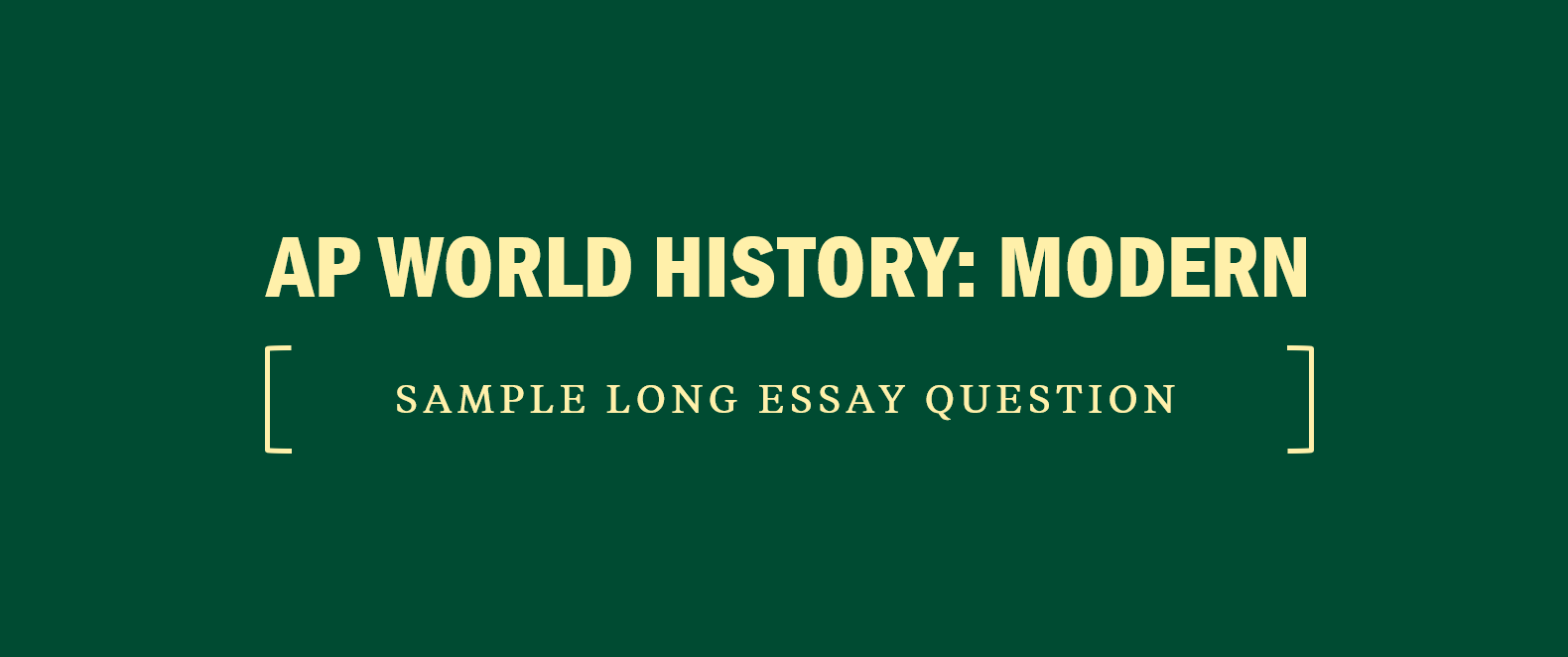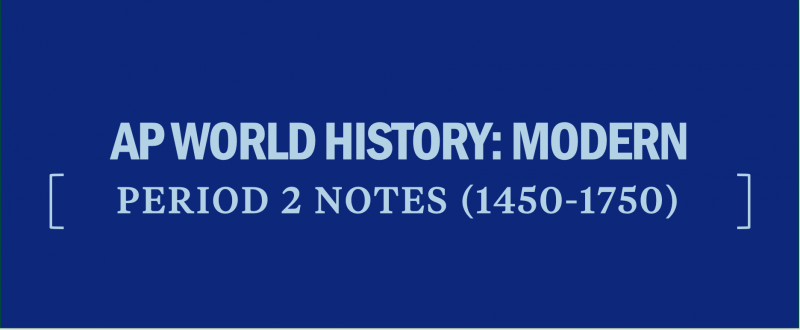Chinese Empire Notes — AP World History: Modern
China has been a world power for centuries, and having a strong knowledge of the history of the Chinese Empire is essential for success on the AP World History: Modern Exam. Read on for key events and periods in Chinese history, and check out our Civilizations of Asia post for info about other ancient Asian civilizations.
Table of Contents:
- 14th Century Recovery and Renaissance
- Chinese Exploration
- Qing Dynasty
- Reform in the Chinese Empire
- Chinese Communist Revolution
- 20th to 21st Century Chinese Reform
Chinese Empire: Recovery and Renaissance
In 1368, the Mongol Yuan Dynasty collapsed and Emperor Hongwu started the Ming Dynasty. Hongwu reinstated the Confucian education system and civil service exam and tightened central authority. The Ming relied on mandarins, a class of powerful officials, to implement their policies on the local level. They also conscripted laborers to rebuild irrigation systems; as a result, agricultural production increased. Though the Ming did not actively promote trade, private merchants traded manufactured porcelain, silk, and cotton. Where the Yuan Dynasty had imposed high taxes to support Mongol military efforts, the Ming favored a policy of minimal taxation. This approach facilitated trade but left the Ming state vulnerable to economic disruptions. In the seventeenth century, the Ming finally faced troop defections and rebellions over the state’s inability to pay its own soldiers.
The Ming Dynasty strongly promoted Chinese cultural traditions and established Neo-Confucian schools which stressed Confucian values such as self-discipline, filial piety, and obedience to rulers. The Ming Dynasty saw three of the “Four Great Classical Novels” of Chinese literature published: The Water Margin, Romance of the Three Kingdoms, and Journey to the West. Perhaps the most widely read novel in both late imperial and modern China, and culturally influential throughout East Asia, Romance of the Three Kingdoms is an 800,000-word epic. The story opens with the Yellow Turban Rebellion at the twilight of the Han Dynasty, and it follows a sprawling cast during the Three King- doms period as they battle over whose faction will reunite China. Its opening lines summarize a repeating pattern in Chinese political history: “The world under heaven, after a long period of division, tends to unite; after a long period of union, tends to divide. This has been so since antiquity.”
Jesuit missionaries such as Matteo Ricci arrived in China, introducing European science and technology. While the Jesuit goal of converting the Chinese population to Catholicism proved unsuccessful, Ricci’s syncretic approach, accepting ancestor veneration while also using Confucian values to “translate” Christian doctrine, demonstrates how religious belief systems adapt to spread between regions.
Chinese Empire: Exploration
After reestablishing authority over China, the Ming decided to refurbish their country’s large navy. From 1405 to 1433, they sponsored seven massive naval expeditions in order to reinforce Chinese presence in the Indian Ocean, impose imperial control over trade, and impress foreign peoples with the authority of the Ming Dynasty.
The mariner Zheng He led these expeditions. His first trip alone involved 28,000 troops. Zheng He sailed to Southeast Asia, India, the Persian Gulf, Arabia, and East Africa. Zheng He dispensed and received gifts throughout these travels. However, Confucian officials convinced the Chinese emperor that the voyages were too expensive and unprofitable, especially because of renewed concern over the northern Mongol border. Thus, in 1433, the voyages ended, Zheng He’s records were destroyed, and the ships were allowed to rot.
Other Easterners like Muslims, Indians, and Malays continued to use the Indian Ocean for commerce and trade, establishing effective routes and creating a vibrant trade system. When the Europeans did arrive, the world shifted from a primarily Asian-centered economy to a global economy.
Chinese Empire: Qing Dynasty
By the 1640s, the Ming Dynasty had declined and been taken over by a peasant army, which established the short-lived Shun Dynasty. The Manchu, a community of hunters, fishermen, and farmers from the lands to the northeast of China, soon ousted the Shun and established the Qing Dynasty. Thus, China came under the rule of foreigners for the second time (the first being the Mongol-ruled Yuan Dynasty).
The Manchus established and expanded their rule through military conquest. Like Genghis Khan, who reorganized the Mongol army to diminish the importance of tribal allegiances, the Manchu leader Nurhaci created a large army consisting of units called banners, which were organized on a social basis. Each banner was comprised of a set of military companies, but also included the families and slaves of the soldiers. Banners were led by a hereditary captain, many of whom came from Nurhaci’s own lineage. When the Manchu army defeated new groups, they were incorporated into several banners to decrease their potential for insubordination.
The Manchu had adopted elements of Chinese culture generations before the conquest. Unlike the Mongols, they incorporated traditional Chinese practices into government, including using the Confucian civil service exam system to fill government positions. Like the Mongols, however, the Manchu wanted to preserve their own ethnic and cultural identity. They forbade intermarriage between Manchu and Han Chinese, barred Chinese from traveling to Manchuria and learning their language, and forced Chinese men to wear their hair in a braid called a queue as a sign of submission.
The Qing Dynasty created a multiethnic empire that was larger than any earlier Chinese dynasty. It expanded into Taiwan in 1683, increased control of Mongolia throughout the 1690s, and established administrative oversight of Tibet in 1720. The final area to be annexed was Chinese Turkestan in the 1750s. The Manchus ruled Tibet and Turkestan relatively leniently. Local religious leaders, such as the Dalai Lama in Tibet, were allowed to remain in place, and men were not forced to wear the queue. By this time, the expanding Qing and Russian empires were nearing each other, which resulted in Manchu and Russian leaders approving the 1689 Treaty of Nerchinsk, which defined borders and regulated trade.
Reform in the Chinese Empire
The Chinese, like the Ottomans and Russians, were forced to confront their own issues of reform and reaction in the nineteenth century. The Qing Dynasty had grown increasingly ineffective as rulers. New World crops, like sweet potatoes and corn, brought about a rapid population increase. During the Qing Dynasty, it is estimated that the Chinese population quadrupled to 420,000,000. This increase created great strains on the nation. Famines were increasingly common, provoking a series of rebellions that further weakened the Qing Dynasty.
The Chinese military also stagnated from the mid-seventeenth century onward, as the evolution of gunpowder weapons finally ended the threat of horse-riding steppe nomads that had troubled China for millennia. The last nomadic confederation to threaten China, the Dzungar Khanate in what is the modern-day Chinese region of Xinjiang, lost a series of conflicts with the Qing Dynasty. These conflicts culminated in organized genocide, as approximately 80 percent of the Dzungar people were killed under the orders of the Qing emperor and ethnic Chinese people were settled on their former lands. Without neighboring threats, China had no reason to innovate its military technology or tactics and its army grew to lack battlefield experience.
With its vast population and resources, China was self-sufficient and, along with its rejection of foreign influence, felt it required nothing that the outsiders produced. However, Europeans, Britain in particular, sought trade with China to acquire silks, lacquerware, and tea, the latter of which was increasing in popularity in their homelands. British merchants paid in silver bullion for Chinese goods. The amount of bullion a nation or company owned determined its wealth and its strength (according to mercantilism). This silver drain from Britain inspired its merchants to find something the Chinese wanted other than bullion. They found it in opium, an addictive narcotic made from the poppy plant. Despite the emperor declaring the opium trade illegal, British merchants smuggled it into the country. Chinese merchants agreed to pay for opium in silver, which the British merchants used to buy Chinese goods, making a profit on both ends of this drug trafficking. This reversed the silver drain from Britain to China, and it also created a large number of Chinese opium addicts.
The First Opium War (1839–1842) broke out over a customs dispute, but resentment over British drug trafficking played a major role as well. China suffered a major defeat, and a series of unequal treaties gave Britain and other European nations commercial entry into China. For example, Hong Kong was ceded to the British in 1841, and control over it was only transferred back to China in 1997. This began a period of Chinese history referred to as the Century of Humiliation.
The Second Opium War (1856–1860) resulted from the Western European desire to further weaken Chinese sovereignty over trade, to legalize the opium trade, and to expand the export of indentured workers whose situations closely resembled slavery. In October 1860, a Franco-British expeditionary force looted and burned Beijing’s Old Summer Palace. British and French museums still feature its stolen art, and the palace ruins are an important landmark for China. Shock over the defeat led to the Qing’s Self-Strengthening Movement. Drug use also became even more rampant thanks to opium flooding the country.
Chinese Empire: Rebellions and Revolutions
Uprisings such as the Taiping Rebellion (1850–1864) placed further stress on China. An obscure scholar named Hong Xiuquan, who believed he was the brother of Jesus Christ, founded an off- shoot of Christianity. A social reform movement grew from this in the 1850s, which the government suppressed. Hong established the Taiping Tianguo (Taiping Heavenly Kingdom), and his followers created an army that, within two years of fighting, controlled a large territory in central China. Nationalism influenced this rebellion, as the majority Han ethnic group resented rule by the minority Manchus, who had conquered the native Ming Dynasty but now seemed powerless against European imperialism.
Internal disputes within the Taipings finally allowed the Qing Dynasty to defeat them, but it was a long struggle that exhausted the imperial treasury. Between 20 and 30 million people died in the Taiping Rebellion, making it the bloodiest civil war in history. It did, however, lead to greater inclusion of Han Chinese in the Qing Dynasty’s government. Both Sun Yat-sen and Mao Zedong viewed Hong Xiuquan as a spiritual predecessor, for both his anti-Manchu and his anti-imperialist stances.
The Qing did implement limited reforms. With government-sponsored grants in the 1860s and 1870s, local leaders promoted military and economic reform in China using the slogan: “Chinese learning at the base, Western learning for use.” These leaders built modern shipyards, railroads, and weapon industries, and they founded academies for the study of science. It was a solid foundation, but the Self-Strengthening Movement brought only minimal change. It also experienced resistance from the imperial government.
The Qing’s last major reform effort took place in 1898. It was known as the Hundred Days’ Reform. This ambitious movement reinterpreted Confucian thought to justify radical changes to the system, with the intent to remake China into a powerful modern industrial society. The Emperor Guangzu instituted a program to change China into a constitutional monarchy, guarantee civil liberties, and build a modern education system. These proposed changes were strongly resisted by conservative officials. Particularly upset was the Empress Dowager Cixi, who cancelled the reforms and imprisoned the emperor in a coup. With that, Qing China’s chance for a reformed society ended.
Another rebellion further complicated issues in China. The Boxer Rebellion (1899–1901) sought to rid China of foreigners and foreign influence. Empress Cixi supported the movement, hoping to eliminate all foreign influence. A multinational force from countries such as the United States, Russia, and Japan, however, handily defeated the Boxers and forced China to pay a large indemnity in silver for the damages. Afterwards, Cixi belatedly supported modest reforms: the New Policies, also known as the Late Qing Reforms. In Qing China’s weakened state, some provinces adopted them, but others did not.
Amid all of these rebellions and attempts at reform, a revolutionary movement was slowly emerging. It was composed of young men and women who had traveled outside China—who had seen the new liberalism and modernization of both the West and Japan. They hoped to import these ideas. Cells were organized in Guangzhou and overseas in Tokyo and Honolulu, where plots to overthrow the Qing were developed.
Under the leadership of Sun Yat-sen (Sun Zhong-shan), after many attempted unsuccessful uprisings, the Qing were forced to abdicate in 1911 and the Republic of China was proclaimed. Sun dreamed of a progressive and democratic China based on his Three Principles of the People: nationalism, democracy, and socialism. His goal would never be achieved due to civil war and the Warlord Era.
Chinese Communist Revolutions
At the beginning of the twentieth century, China struggled to reconcile its 2000-year history and imperial traditions with the challenges of the modernizing West. The declining Qing Dynasty finally succumbed in the Xinhai Revolution (the Chinese Revolution of 1911). The last emperor abdicated and China was declared a republic. The new government instituted a program of Western-oriented reforms focused on national independence from foreign control, constitutional democracy, and popular welfare. However, the country soon fragmented into a series of warlord-dominated zones, reflecting China’s long history of chaotic regional struggles whenever the strong central government weakened.
The Kuomintang (KMT) was the ruling nationalist party founded by Sun Yixian (Sun Yat-sen) and led after his death in 1925 by Jiang Jieshi (Chiang Kai-shek). They struggled to unify and modernize China in the face of continued Western extraterritorial privileges and increasing Japanese imperialist pressure. Although the new Soviet Union helped build the KMT’s military power in the 1920s, by the 1930s the Chinese Communist Party (CCP) had emerged as a major political and military rival, with a program more oriented toward China’s huge rural population than its urban middle and working classes. The growing conflict with Japan after 1931 increased national feeling and cooperation among factions, but also weakened or destroyed China’s most modern and Westernized sectors. After Japan’s surrender in 1945, open civil war broke out. However, military blunders and widespread internal corruption led to the KMT’s defeat by 1949; it evacuated to Taiwan.
Due to Cold War politics, the Republic of China’s government continued to hold on to its United Nations Security Council seat until 1971, when the People’s Republic of China became internationally recognized as the legitimate government of China.
The second Chinese Revolution was launched in 1949 by the communist Mao Zedong, who proclaimed the country to be the People’s Republic of China. The United States and many other countries refused to recognize the new regime and treated it as a hostile power. Similar to the Russian experience, the Chinese had to adapt the industrial theories of Marx to an almost entirely rural nation. Stalin sent advisors and aid to the newest, largest communist state. Following totalitarian models of the period, the Chinese Communist Party eliminated all opposition by killing and imprisoning millions, completely controlled cultural and political expression, and elevated Mao as the supreme and perfect dictator. Mao expanded the party’s existing land reform program, whereby landlords were dispossessed and often killed, and landless peasants were given their own parcels to farm in cooperative groups. This required social adjustment as well as economic. Communist ideology was promoted as a replacement for Confucian ideals, which had enforced traditional class hierarchies for thousands of years. Businesses were nationalized and a Five-Year Plan was begun to develop heavy industry along Soviet lines.
Mao’s Initial Changes to China
| Economic | All businesses were nationalized. Land was distributed to peasants. Peasants were urged to pool their land and work more efficiently on cooperative farms. |
| Political | A one-party totalitarian state was established. Communist party became supreme. Government attacked crime and corruption. |
| Social | Peasants were encouraged to “speak bitterness” against landlords (10,000 landlords were killed as a result). Communist ideology replaced Confucian beliefs. Schools were opened with emphasis on political education. Health care workers were sent to remote areas. Women won equality (but little opportunity in government and were paid less than men). The extended family was weakened. |
Mao’s ideological but often impractical focus led to erratic methods of national development. Not satisfied with the technocratic Soviet model, in the late 1950s Mao decreed the Great Leap Forward. All life was collectivized, private property was abolished, and ancient social customs were replaced by Communist Party activities. To achieve a modern industrial capacity, backyard steel furnaces were set up, in which farmers made iron and steel from scrap metal. The Great Leap Forward was a failure. To meet state quotas, farmers sometimes melted down their own farming tools. The backyard furnaces produced poor quality iron, and bad weather combined with a drop in agricultural productivity to cause a major famine and the deaths of at least 30 million Chinese.
Mao’s second major initiative was the Cultural Revolution of the late 1960s. In an effort to re- revolutionize China, young students known as the Red Guards imposed Maoist orthodoxy on institutions throughout Chinese society. Middle-class and educated people were persecuted or sent to the countryside for reeducation in the ways of the peasantry. As a result, the country lost an entire generation of skilled leaders. The exact death toll is unknown, due to poor record-keeping and the Chinese government’s reluctance to relitigate the Cultural Revolution. Estimates range from 700,000 to several million dead. After Mao’s death in 1976, the party promoted a more moderate and rational path to modernization.
More Chinese Political Reform and Economic Changes
After Mao died in 1976, Deng Xiaoping came to power. In contrast to Mao, Deng instituted the Four Modernizations: industry, agriculture, technology, and national defense. Foreign and domestic investment was encouraged; industrialists assembled massive conglomerates and great wealth, and entire cities were redeveloped. Research and development focused on futuristic technologies, and thousands of students were sent abroad to study. As a result of these capitalist-style reforms, the economy boomed, and within a generation China had left behind its developing nation status. It was now on a path to restore, peacefully, its traditional position as a global heavyweight. China also regained the last of its territories held by Europeans: Hong Kong (1997) and Macau (1999).
This new China could not properly be called communist, but the Communist Party still ruled China as a bureaucratic dictatorship. The rising middle class began to push for democratic reforms. In May of 1989, in parallel with the collapse of the Soviet Union, massive student demonstrations occurred in Tiananmen Square. Fearing the nationwide chaos that often occurred when an emperor was deposed, as well as a repeat of the political implosion in the Soviet bloc, China’s leadership sent troops and tanks to brutally crush the rebellion. Today, the government continues to promote the idea that single-party leadership and political stability are the keys to China’s success.
In 2010, China surpassed Japan to become the second largest economy in the world. China has become a lucrative market for businesses all around the world even as Chinese companies become global brands themselves. With its increased stature, China has begun to invest in infrastructure and resource extraction in Asia and Africa as part of its Belt and Road Initiative (BRI), also known as One Belt One Road (OBOR), a modern-day successor to the Silk Road. Economically, China is expected to surpass the United States and become the world’s largest economy sometime in the 2020s.

